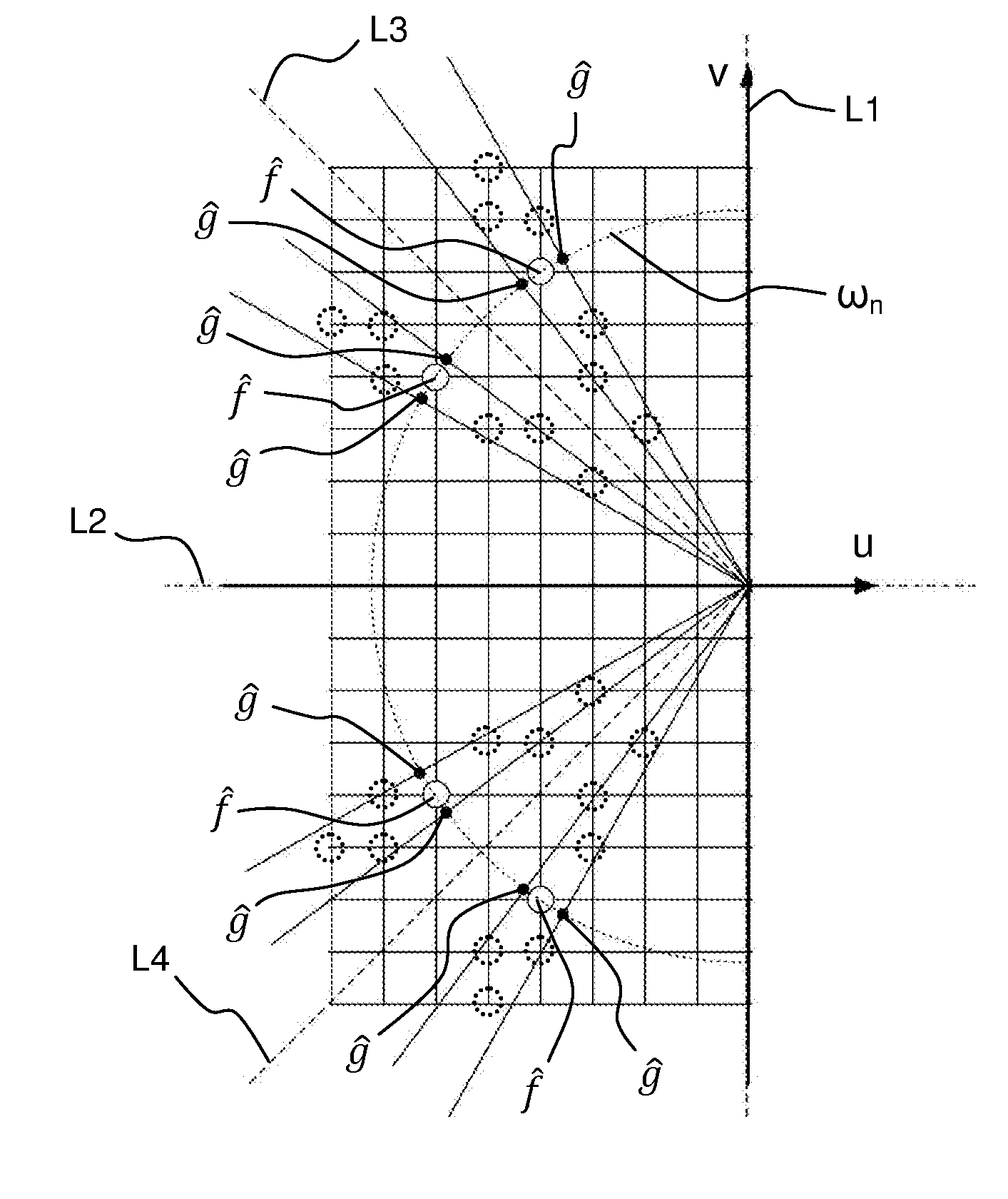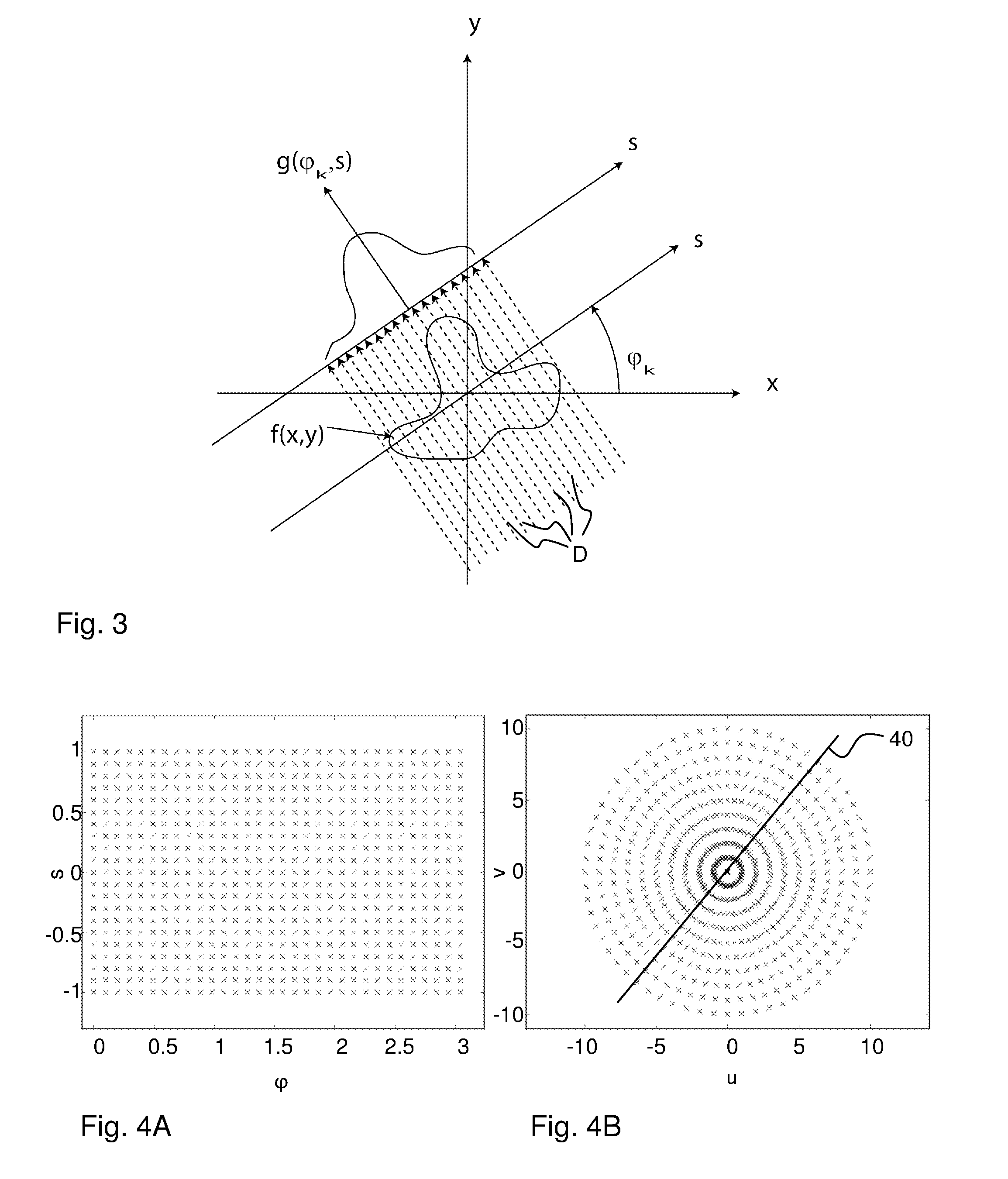Efficient tomographic processing for touch determination
- Summary
- Abstract
- Description
- Claims
- Application Information
AI Technical Summary
Benefits of technology
Problems solved by technology
Method used
Image
Examples
Embodiment Construction
[0054]The following example embodiments are directed to techniques that may improve processing speed and / or reduce the need for data storage in connection with Fourier-based image reconstruction in a touch-sensitive apparatus. Throughout the description, the same reference numerals are used to identify corresponding elements.
1. Touch-Sensitive Apparatus
[0055]FIG. 1A illustrates a touch-sensitive apparatus 100 which is based on the concept of transmitting energy of some form across a touch surface 1, such that an object that is brought into close vicinity of, or in contact with, the touch surface 1 causes a local decrease in the transmitted energy. The touch-sensitive apparatus 100 includes an arrangement of emitters and sensors, which are distributed along the periphery of the touch surface. Each pair of an emitter and a sensor defines a detection line, which corresponds to the propagation path for an emitted signal from the emitter to the sensor. In FIG. 1A, only one such detection...
PUM
 Login to View More
Login to View More Abstract
Description
Claims
Application Information
 Login to View More
Login to View More - R&D
- Intellectual Property
- Life Sciences
- Materials
- Tech Scout
- Unparalleled Data Quality
- Higher Quality Content
- 60% Fewer Hallucinations
Browse by: Latest US Patents, China's latest patents, Technical Efficacy Thesaurus, Application Domain, Technology Topic, Popular Technical Reports.
© 2025 PatSnap. All rights reserved.Legal|Privacy policy|Modern Slavery Act Transparency Statement|Sitemap|About US| Contact US: help@patsnap.com



